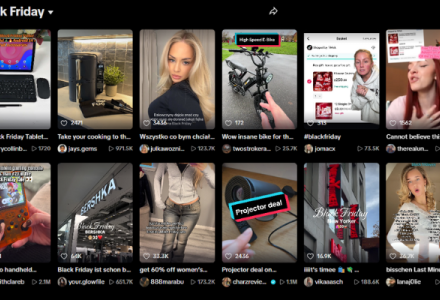Why are retailers making marketplaces their secret weapon?
Marketplaces are hot right now.
If Amazon is the everything store, marketplaces allow existing bricks and clicks retailers to become online department stores.
For some omnichannel retailers, it allows them to compete with Amazon for customers. For others, it allows them to compete for retail media budgets. In 2022, marketplaces became retail's secret weapon. In 2023, bricks and clicks retailers are looking to marketplaces as their growth engine.
From a retailer's perspective, there are 3 opportunities:
1. Expand into adjacent and new categories, bringing significant revenue.
2. Increase range and price points within existing categories, serving the long tail.
3. Ad platform - leverage the marketplace to serve ads. With Amazon increasingly becoming a 'pay-to-play' marketplace for Page 1 listings, other marketplaces have an opportunity to drive meaningful sales for brands at competitive margins.
And these opportunities are not just about serving more customers, or increased market share. Adding a marketplace means greater profitability as often marketplace products are fulfilled by the brand owner.
Some key marketplace moves:
• Mirakl is rapidly adding key European clients, such as Carrefour, B&Q and Superdrug. The marketplace software provider closed a $555M Series E round in Sept 2021 and has 300+ clients, operating out of Paris and Boston. They've worked with Kroger in the US since 2020.
• Australia's Marketplacer raised $38M in Dec 2021 to fund its US and Asia Pacific expansion. The company already has 100 clients, including Woolworths Supermarkets in Australia. It announced a partnership with ad platform Citrus Ad in December.
• Superdrug's marketplace, powered by Mirakl launched in November 2022 to expand its range and allow up-and-coming brands an easy entry point to Superdrug's customer base. Boots is also launching a Mirakl-powered marketplace in Spring 2023.
• Kingfisher plc's B&Q launched it's Mirakl marketplace in March 2022, tripling SKUs to 100k. Less than a year on, marketplace sales make up more than 10% of revenue.
• Carrefour France launched it's Mirakl marketplace in 2020, with 52% of their sellers being SMEs, allowing small producers to reach Carrefour's audience of 15 million. Carrefour got into marketplaces early with Carrefour Spain launching one in 2018 (expanding from 100k SKUs to 2 million), with other countries following. Since 2021, Carrefour Group has had data and media partnerships in place with Criteo, Google and LiveRamp, creating a personalisation and media platform called Carrefour Links – a clear attempt to compete with Amazon for supplier ad spend.
• In the US, big retail names such as Macy’s, Albertsons, Bed, Bath & Beyond, Michaels and 1-800-Flowers.com all announced marketplaces. Grocers Costco and Giant both launched marketplaces in 2021 to expand into non-food.
What do retailers need to consider when adding a marketplace?
• Which categories can they win in and are complementary to the current offering?
• How will they manage their master data management/PIM stack to keep in-store and e-com marketplaces SKUs organised?
• How will they capitalise on the advertising opportunity? What value can you bring to brands to compete with Amazon for increasing supplier retail media budgets?
• How will they manage deliveries from multiple sellers so the customer experience is seamless?
As a supplier, retailers expanding into marketplaces offers some great opportunities:
• New, large retail audiences e.g. a cosmetics retailer expanding its categories via a marketplace is a great opportunity for luxury brands and wellness food and drink brands.
• Higher rankings. Category expansion, or simply a new online store, may offer a chance to dominate a category by being an early supplier.
• Established retail brands are trusted by shoppers and can offer both volume sales and good conversion rates from organic traffic.
• New retail media solutions will give a first-mover advantage to suppliers interesting in testing retail media offerings and comparing ROI with D2C and Amazon media spend.
This is a guest piece written by Viv Craske, E-commerce Advisor & Consultant
Viv Craske is an e-commerce consultant for CPGs, grocery retailers and FoodTech startups. He is the author of Surviving Digital Disruption, and has worked with Tesco, Albert Heijn, Nestle and Pernod Ricard.
Get in touch with Viv here or visit his website: www.vivcraske.com



